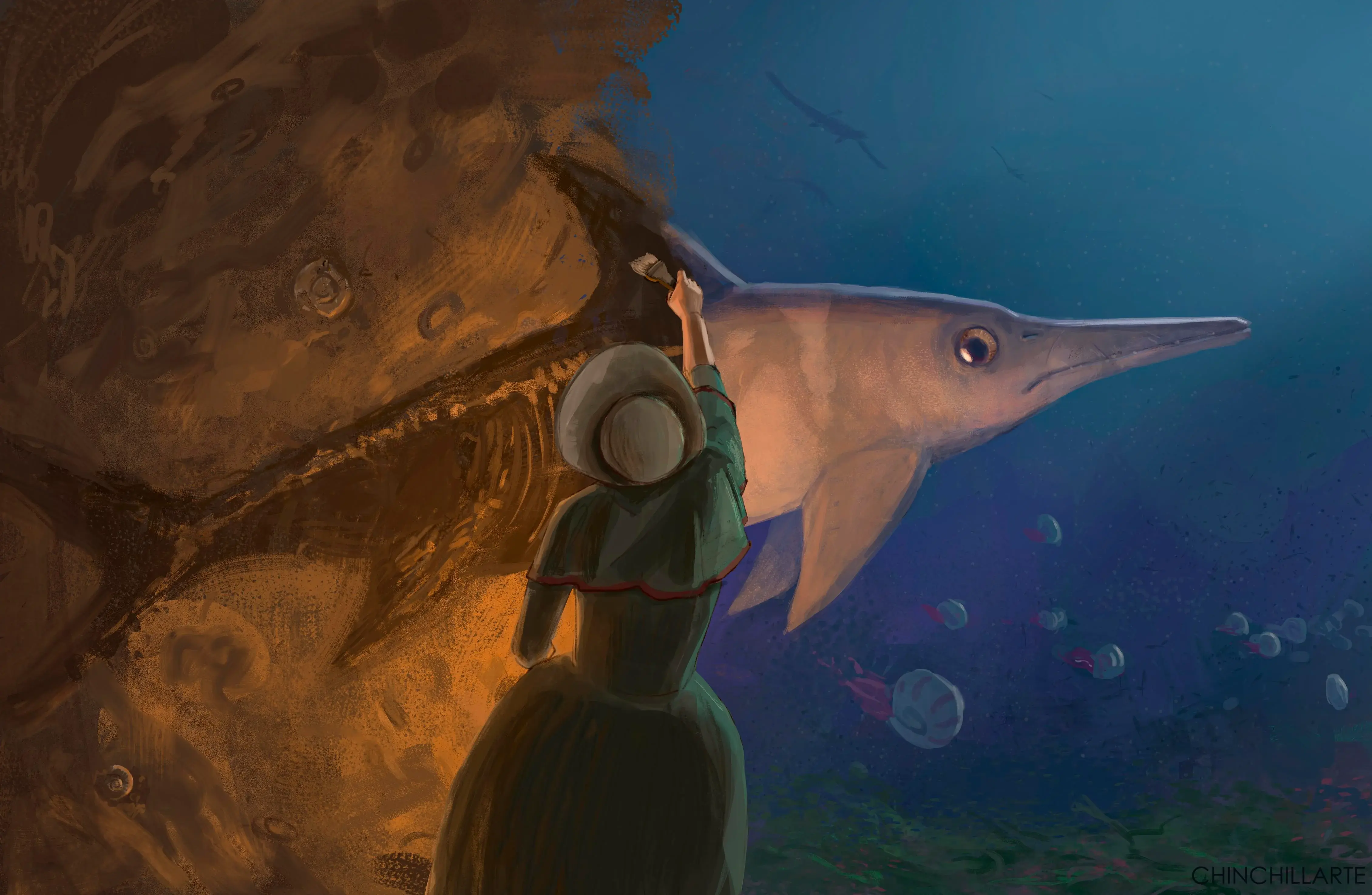
Palaeoecology
- Mammalian fossils reveal how southern Europe's ecosystem changed during the Pleistocenephys.org Mammalian fossils reveal how southern Europe's ecosystem changed during the Pleistocene
Fossils from more than 600,000 years ago reveal how Southern Europe's animal community shifted between warm and cold climate fluctuations, according to a study published October 23, 2024 in the open-access journal PLOS ONE by Beniamino Mecozzi from the Sapienza Università di Roma, Italy and colleagu...
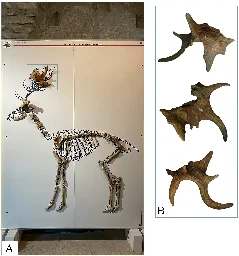
- Diatom Arrangements – The Hidden Beauty of Single Cell Algae Art Arrangementswww.trebeljahr.com Diatom Arrangements – The Hidden Beauty of Single Cell Algae Art Arrangements
This post is a bit of an odd one: it's a collection of images of diatom arrangements. Diatoms are single-celled algae that have a glass shell, that refracts light in beautiful colors if viewed under a microscope...
- Strange and wondrous creatures: plankton and the origins of life on Earthwww.theguardian.com Strange and wondrous creatures: plankton and the origins of life on Earth
The long read: Without plankton, the modern ocean ecosystem – the very idea of the ocean as we understand it – would collapse. Earth would have no complex life of any kind

- 'Closer than people think': Woolly mammoth 'de-extinction' is nearing reality — and we have no idea what happens nextwww.livescience.com 'Closer than people think': Woolly mammoth 'de-extinction' is nearing reality — and we have no idea what happens next
Scientists are getting very close to bringing a few iconic species, like woolly mammoths and dodos, back from extinction. That may not be a good thing.
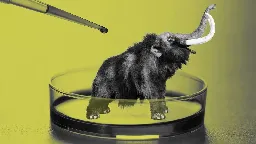
- Mass extinction 66 million years ago triggered rapid evolution of bird genomesnews.umich.edu Mass extinction 66 million years ago triggered rapid evolution of bird genomes
Shortly after an asteroid slammed into Earth 66 million years ago, life for non-avian dinosaurs ended, but the evolutionary story for the early ancestors of birds began.
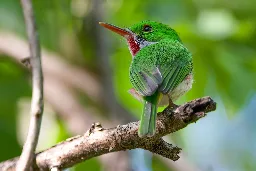
- Scientists Uncover the Ancient Origins of Baobab Trees in Genetic Studywww.smithsonianmag.com Scientists Uncover the Ancient Origins of Baobab Trees in Genetic Study
The trees originated in Madagascar 21 million years ago but later traveled long distances by way of ocean currents, according to new research
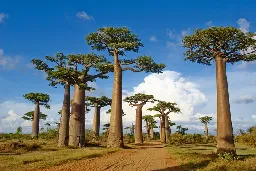
- World's earliest fossilised forest discovered in Minehead, Somersetwww.bbc.co.uk World's earliest fossilised forest discovered in Minehead, Somerset
The tree fossils dating back 390 million years were found near a Butlin's holiday camp in Somerset.
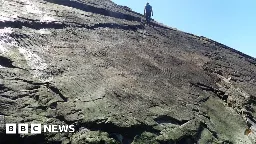
- Fossilized forest unearthed in the UK is the oldest ever found at 390 million years oldwww.livescience.com 390 million-year-old fossilized forest is the oldest ever discovered
Researchers have discovered a fossil forest with small, palm-like trees and arthropod tracks dating back to the Middle Devonian.

Fossilized trees discovered by chance in southwest England belong to Earth's earliest-known forest, new research has found. The 390 million-year-old fossils supplant the Gilboa fossil forest in New York state, which dates back 386 million years, as the world's oldest known forest.
The new discovery highlights differences between the two ecosystems, suggesting forests went from being relatively primitive to well established over the course of just a few million years, said Neil Davies, the lead author of a new study published Feb. 23 in the Journal of the Geological Society.
"Why it's important — broadly — is it ticks the boxes of being the oldest fossil forest," Davies, a professor in the Department of Earth Sciences at the University of Cambridge in the U.K., told Live Science. The finding is also remarkable because it reveals stark differences between the complex array of ancient plants found at Gilboa and the newly discovered forest, which appears to have hosted just one type of plant, Davies said.
- Mollusk Eyes Reveal How Future Evolution Depends on the Past | Quanta Magazinewww.quantamagazine.org Mollusk Eyes Reveal How Future Evolution Depends on the Past | Quanta Magazine
The visual systems of an obscure group of mollusks provide a rare natural example of path-dependent evolution, in which a critical fork in the creatures’ past determined their evolutionary futures.
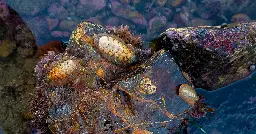
- Volcanic Lightning May Have Retooled the Nitrogen Needed for Life - Eoseos.org Volcanic Lightning May Have Retooled the Nitrogen Needed for Life - Eos
Early Earth’s volcanoes could have spurred lightning that transformed atmospheric nitrogen, creating molecules that would have been necessary for life to emerge.
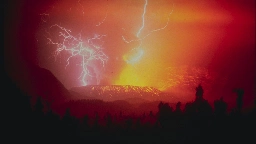
- How did life on Earth begin? The chemical puzzle just became clearer.www.washingtonpost.com How did life on Earth begin? The chemical puzzle just became clearer.
Researchers have successfully created a compound critical for metabolism in all living cells, which is essential for energy production and regulation.
- Unearthing The Oldest Forest on Earth: Two Hours from New York City You Can Travel Back Nearly 400 Million Yearsworldsensorium.com Unearthing The Oldest Forest on Earth: Two Hours from New York City You Can Travel Back Nearly 400 Million Years
Unearthing The Oldest Forest on Earth Two Hours from New York City You Can Travel Back Nearly 400 Million Years By Gayil Nalls Sign up for our monthly newsletter! The exploration of an ancient, fossilized forest in a quarry in Cairo, New York, in the region of the Catskill-Hudson Valley, initiated y...
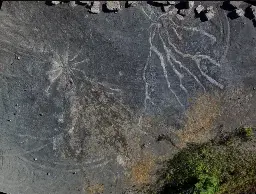
- 'Living fossil' tree frozen in time for 66 million years being planted in secret locationswww.livescience.com 'Living fossil' tree frozen in time for 66 million years being planted in secret locations
Wollemi pines — thought to have gone extinct 2 million years ago — were rediscovered in 1994. Scientists are now hoping to reintroduce the species in the wild in a conservation effort that could take centuries.
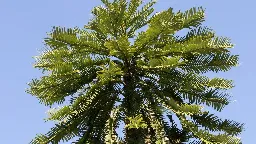
- Study shows orchid family emerged in northern hemisphere and thrived alongside dinosaurs for 20 million yearsphys.org Study shows orchid family emerged in northern hemisphere and thrived alongside dinosaurs for 20 million years
In a new study published in New Phytologist, scientists at the Royal Botanic Gardens, Kew, along with partners in Latin America, Asia and Australia, present an updated family tree of orchids, tracing their origins to the northern hemisphere some 85 million years ago. Not only does the study shed new...
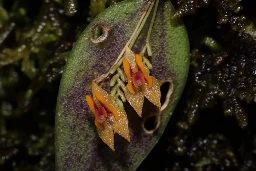
- A botanical Pompeii: we found spectacular Australian plant fossils from 30 million years agotheconversation.com A botanical Pompeii: we found spectacular Australian plant fossils from 30 million years ago
Millions of years ago, widespread volcano eruptions in eastern Australia buried entire forests. Today, these time capsules reveal stunningly fossilised plants.
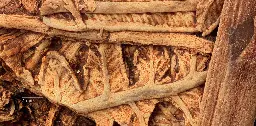
- Trees from million years ago look completely different, rare fossils revealwww.independent.co.uk Scientists discover trees from 350m years ago that look completely alien
‘The history of life on land consists of plants and animals that are unlike any of those that live at the present’
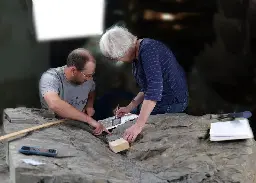
- Pollen diaries: Polar ice records preserve climate vs. human impact following Little Ice Agephys.org Pollen diaries: Polar ice records preserve climate vs. human impact following Little Ice Age
Pollen can help scientists track changes in vegetation through time, as they respond to moderations of the climate, be that glaciation or deglaciation with transitions into and out of ice ages. Furthermore, it can help elucidate the interplay between climate and the impact early human settlement exp...
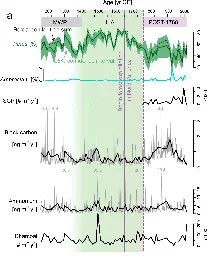
- Making the invisible visible: tracing the origins of plants in West African cuisine through archaeobotanical and organic residue analysis - Archaeological and Anthropological Scienceslink.springer.com Making the invisible visible: tracing the origins of plants in West African cuisine through archaeobotanical and organic residue analysis - Archaeological and Anthropological Sciences
West African cuisine has long been known for its distinct ingredients and flavours, often enhanced by the addition of a large and diverse range of plant foods. A traditional meal comprises a starchy staple cooked in a pot and served with a sauce prepared from vegetables, fish and/or meat, often acco...
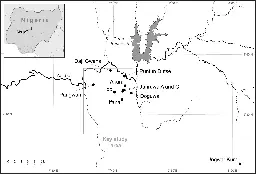
- 1.6-billion-year-old fossils push back origin of multicellular life by tens of millions of yearswww.livescience.com 1.6-billion-year-old fossils push back origin of multicellular life by tens of millions of years
Researchers uncovered fossils of multicellular eukaryotes that are over a billion years old.

- The botanical imperialism of weeds and crops: how alien plant species on the First Fleet changed Australiatheconversation.com The botanical imperialism of weeds and crops: how alien plant species on the First Fleet changed Australia
It wasn’t just colonists and convicts who invaded Australia in 1788 – invasive plant species arrived too.

- Use it or lose it: How seagrasses conquered the seawww.sciencedaily.com Use it or lose it: How seagrasses conquered the sea
Seagrasses provide the foundation of one of the most highly biodiverse, yet vulnerable, coastal marine ecosystems globally. They arose in three independent lineages from their freshwater ancestors some 100 million years ago and are the only fully submerged, marine flowering plants. Moving to such a ...

- Bizarre Fossils Are Neither Plant Nor Animal, But a 'Weird Fusion' of Lifewww.sciencealert.com Bizarre Fossils Are Neither Plant Nor Animal, But a 'Weird Fusion' of Life
If you ever find yourself playing a game of twenty questions, there's a little-known life form you can pick that is sure to leave your opponent stumped.
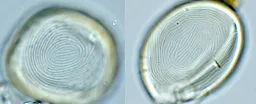
- The Silurian Period (That We Know Of) ft. Crime Pays But Botany Doesn't
YouTube Video
Click to view this content.
- The 'dark earth' revealing the Amazon's secretswww.bbc.com The 'dark earth' revealing the Amazon's secrets
Amid the discovery of a lost city in the Amazon rainforest, scientists are uncovering a different kind of relic underground – one that's still being used today.

- New evidence that polar bears survived 1,600 years of ice-free summers in the early Holocenepolarbearscience.com New evidence that polar bears survived 1,600 years of ice-free summers in the early Holocene
New evidence indicates that Arctic areas with the thickest ice today probably melted out every year during the summer for about 1,600 years during the early Holocene (ca. 11.3-9.7k years ago), maki…
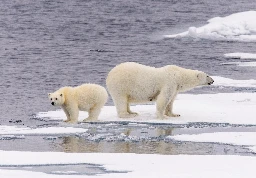
- 23 million-year-old petrified mangrove forest discovered hiding in plain sight in Panamawww.livescience.com 23 million-year-old petrified mangrove forest discovered hiding in plain sight in Panama
Fossils discovered on Barro Colorado Island suggest central Panama was once home to a vast mangrove forest that was preserved when a volcanic mudflow buried it 23 million years ago.
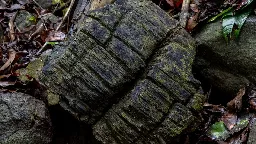
- Deep Beneath Earth’s Surface, Clues to Life’s Origins | Quanta Magazinewww.quantamagazine.org Deep Beneath Earth’s Surface, Clues to Life’s Origins | Quanta Magazine
Last spring, scientists retrieved a trove of mantle rocks from underneath the Atlantic seafloor — a bounty that could help write the first chapter of life’s story on Earth.

- Permian marine mass extinction linked to volcanism-induced anoxiaphys.org Permian marine mass extinction linked to volcanism-induced anoxia
Mass extinctions are rapid global decreases in Earth's biodiversity, with five key events identified over the planet's history, arguably the most famous of which occurred ~66 million years ago during the Cretaceous, which brought the rein of dinosaurs to an end. However, the largest mass extinction ...
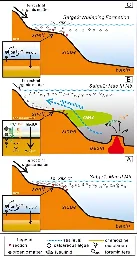
Mass extinctions are rapid global decreases in Earth's biodiversity, with five key events identified over the planet's history, arguably the most famous of which occurred ~66 million years ago during the Cretaceous, which brought the rein of dinosaurs to an end. However, the largest mass extinction is attributed to the Permian, during which it is estimated that >95% of all life on Earth was eradicated.
The cause of this devasting event is still debated, with advocates for both a large asteroid impact that caused dust to plume into the atmosphere, blocking sunlight and generating acid rain, or significant volcanism that released copious amounts of CO2 into the atmosphere and made the oceans toxic to marine life.
New research published in Chemical Geology lends further support to the latter theory.
- Earliest known parasitic fungus discovered in fossilized plant frozen in time 400 million years agowww.livescience.com Earliest known parasitic fungus discovered in fossilized plant frozen in time 400 million years ago
A fossilized plant in a museum collection contained the oldest known disease-causing fungus, with microscopic images showing it bursting through the plant's wall.
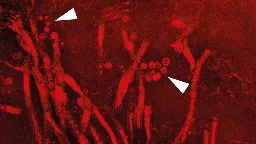
- Study reshapes understanding of mass extinction in Late Devonian eraphys.org Study reshapes understanding of mass extinction in Late Devonian era
Diverse and full of sea life, the Earth's Devonian era—taking place more than 370 million years ago—saw the emergence of the first seed-bearing plants, which spread as large forests across the continents of Gondwana and Laurussia.
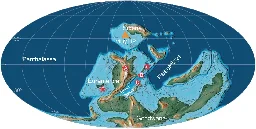
Diverse and full of sea life, the Earth's Devonian era—taking place more than 370 million years ago—saw the emergence of the first seed-bearing plants, which spread as large forests across the continents of Gondwana and Laurussia.
However, a mass extinction event near the end of this era has long been the subject of debate. Some scientists argue the Late Devonian mass extinction was caused by large-scale volcanic eruptions, causing global cooling. Others argue a mass deoxygenation event caused by the expansion of land plants was to blame.
A recently published study in the journal Communications Earth & Environment led by researchers at IUPUI now posits that both factors played a role—and draws attention to the environmental tipping points the planet faces today.
- Study of ancient British oral microbiomes reveals shift following Black Death | Penn State Universitywww.psu.edu Study of ancient British oral microbiomes reveals shift following Black Death | Penn State University
The Second Plague Pandemic of the mid-14th century, also known as the Black Death, killed 30% to 60% of the European population and profoundly changed the course of European history. A new study led by researchers from Penn State and the University of Adelaide suggests that this plague, potentially ...

- Floral time travel: Flowers were more diverse 100 million years ago than they are todayphys.org Floral time travel: Flowers were more diverse 100 million years ago than they are today
An international team of researchers led by botanists at the University of Vienna, Austria, has analyzed the morphological diversity of fossilized flowers and compared it with the diversity of living species. They found that flowering plants had already produced a large number of different flower ty...
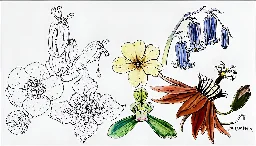
An international team of researchers led by botanists at the University of Vienna, Austria, has analyzed the morphological diversity of fossilized flowers and compared it with the diversity of living species. They found that flowering plants had already produced a large number of different flower types shortly after their emergence in the Cretaceous period, and this earliest floral diversity was greater than that today.
The study has been published in the journal New Phytologist.
- Looking for 'LUCA' and the timing of cellular evolutionwww.sciencedaily.com Looking for 'LUCA' and the timing of cellular evolution
LUCA, the 'last universal common ancestor' of all living organisms, lived 4.32 to at most 4.52 billion years ago. What LUCA looked like is unknown, but it must have been a cell with among others ribosomal proteins and an ATP synthase.
